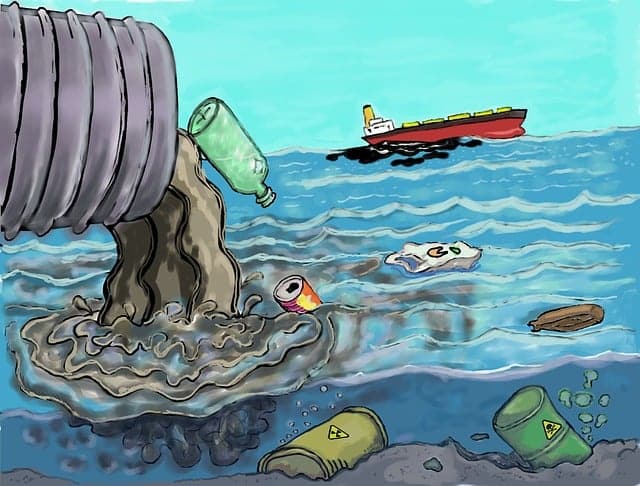Drowning in Waste: Hotspots of Pollution in Aquatic Environments
Our planet’s water bodies, vital lifelines for countless species, are increasingly becoming victims of our own wastefulness. From the majestic ocean depths to tranquil freshwater lakes, the pervasiveness of pollution is a stark reminder of the consequences of our unsustainable consumption patterns. This blog delves into the alarming hotspots of waste pollution in aquatic environments, examining their impact and highlighting the urgent need for action.
The Great Pacific Garbage Patch: A Monument to Our Wastefulness
The Great Pacific Garbage Patch, a swirling vortex of plastic debris twice the size of Texas, stands as a grim monument to the vast scale of our plastic pollution problem. Located in the North Pacific Gyre, this massive accumulation of waste, composed primarily of plastic, is a poignant illustration of how human activities can leave a devastating mark on our oceans.
More Than Just Plastic: A Cocktail of Toxic Threats
While plastic pollution garners significant attention, the spectrum of waste contaminating our water bodies is vast and varied. Chemical runoff from agricultural and industrial activities, sewage discharge, and hazardous waste disposal all contribute to a toxic cocktail that endangers marine life and threatens human health.
The Silent Killer: Microplastics
Microplastics, tiny fragments of plastic less than 5 millimeters in size, pose a particularly insidious threat. These microscopic particles, often invisible to the naked eye, are readily ingested by marine organisms, potentially causing a cascade of harmful effects. From disrupting digestion to accumulating toxins, microplastics are a silent killer, infiltrating the food chain and ultimately impacting human health.
From Oceans to Lakes: A Global Problem
The impact of waste pollution is not confined to the oceans. Freshwater lakes, rivers, and wetlands are also facing a growing crisis. Urban runoff, industrial discharges, and agricultural practices all contribute to the degradation of these vital ecosystems. Inland water bodies, critical sources of drinking water and habitats for diverse species, are increasingly threatened by the accumulation of waste.
The Devastating Impact on Marine Life
The presence of waste in aquatic environments has devastating consequences for marine life. Animals become entangled in plastic debris, leading to suffocation, starvation, and injury. Ingestion of plastic and other waste can cause internal blockages, malnutrition, and even death. The impact on marine ecosystems extends far beyond individual organisms, disrupting food webs and affecting the balance of marine life.
The Human Cost of Waste Pollution
The consequences of waste pollution are not confined to the marine environment. Contaminated water sources can lead to human health problems, ranging from gastrointestinal illnesses to chronic diseases. The economic impact is also significant, affecting fisheries, tourism, and other industries reliant on healthy aquatic ecosystems.
A Call to Action: Addressing the Crisis
The crisis of waste pollution in aquatic environments demands immediate and concerted action. We must shift towards a more sustainable model of consumption and production, minimizing waste generation and promoting responsible disposal practices. Investing in advanced waste management systems, promoting circular economy principles, and implementing robust regulations are crucial steps in mitigating the problem.
The Role of Individual Action
Individual action is equally important in addressing this global challenge. Every individual can make a difference by reducing their plastic consumption, choosing sustainable products, properly disposing of waste, and supporting initiatives that promote clean oceans. Together, we can turn the tide against waste pollution and restore the health of our aquatic environments.
Conclusion
The pollution of our oceans and freshwater bodies is a stark reminder of the unsustainable practices that threaten the health of our planet. The pervasiveness of waste, particularly plastic, poses a significant threat to marine life, human health, and the global economy. By fostering a collective sense of responsibility, promoting sustainable practices, and supporting initiatives that address the root causes of pollution, we can protect our aquatic environments and safeguard the future of our planet.

Leave a Reply